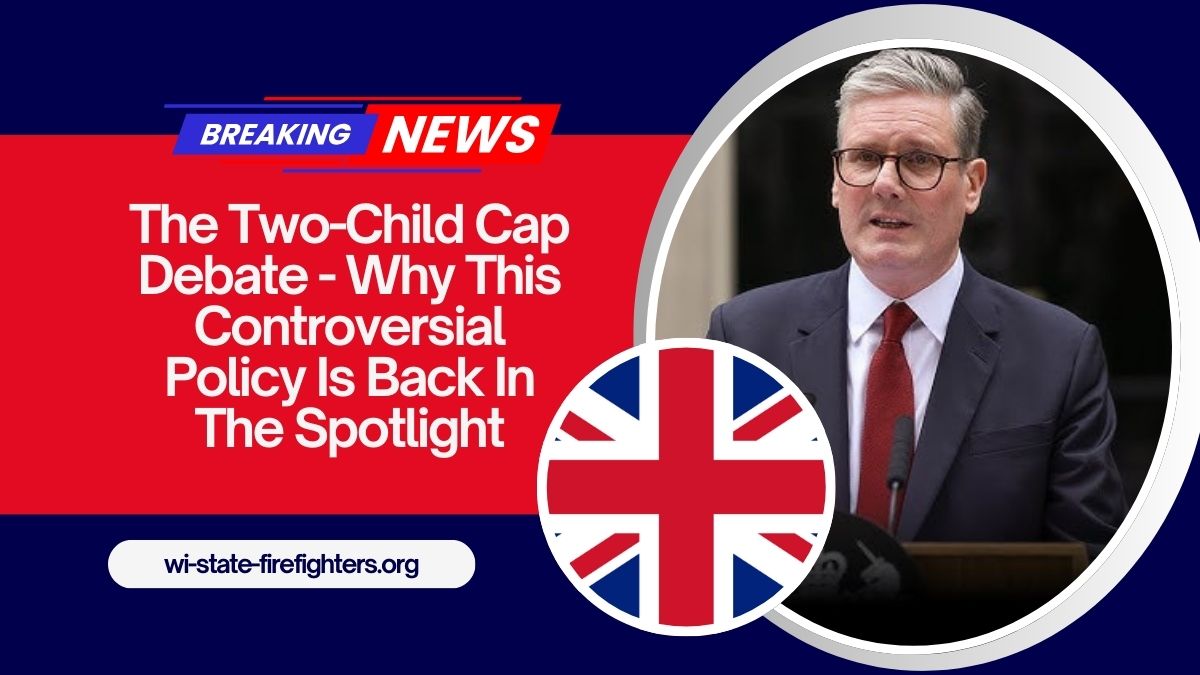As of June 2025, the UK government has officially reopened the discussion on the two-child benefit cap, a controversial welfare policy that limits financial support to only the first two children in most households receiving Universal Credit or Child Tax Credit.
Introduced in 2017, this measure was initially meant to encourage financial responsibility among families relying on benefits.
However, with the current cost-of-living crisis and climbing child poverty rates, the policy has returned to the forefront of national debate.
What Is the Two-Child Cap?
The two-child benefit cap prevents families from receiving additional child-related benefits for any third or subsequent children born after April 6, 2017. Exceptions are rare and generally apply to circumstances like multiple births or adoption.
While the cap was introduced as a cost-saving measure, many believe it has since led to increased hardship, particularly among larger low-income families.
How Many Families Are Affected?
Recent figures reveal that over 1.5 million children live in households impacted by the cap. The financial penalty for affected families can reach up to £3,455 per year per child, an amount that significantly reduces a family’s ability to afford basic necessities like food, clothing, housing, and childcare.
Despite assumptions, over half of these families have at least one working adult, indicating that the policy’s burden extends well beyond unemployed households.
Rising Pressure to Reform
The ongoing economic pressure on UK families—driven by soaring food prices, rent increases, and rising energy bills—has reignited demands to scrap or modify the cap.
Many child welfare groups and advocacy organizations argue that the policy is out of touch with the modern realities of family life.
A 2025 report shows that removing the cap could reduce child poverty by up to 10%, benefitting hundreds of thousands of children. With both political and public support for change growing, the government is now actively exploring a range of policy options.
Policy Options Under Consideration
Here are the main proposals being considered in the 2025 review:
| Policy Option | Description | Potential Impact |
|---|---|---|
| Full Repeal | Remove the two-child limit entirely | Significant poverty reduction; higher benefit costs |
| Regional Adjustment | Adjust the cap based on cost of living in specific areas | Targeted help for high-cost regions like London |
| Conditional Exemptions | Exempt families based on income or employment status | Focuses help on low-income, working households |
| Gradual Phase-Out | Slowly remove the cap over several years | Smooth transition, lower fiscal impact on the government |
These proposals are being analyzed by the Department for Work and Pensions (DWP), with a formal report expected by August 2025.
Political and Public Reaction
The debate over the two-child cap has drawn sharp political divides. Some leaders are calling for an immediate end to the cap, framing it as a matter of moral and economic urgency, while others prefer a cautious approach, citing budgetary constraints.
Public attitudes have also evolved. A 2025 opinion poll revealed that 62% of UK adults now support removing the cap—up significantly from 45% in 2022.
This reflects a broader shift in public values, with more emphasis on social equity and the welfare of children, regardless of family size.
Why the Review Matters
The review of the two-child cap is not just a policy tweak—it represents a turning point in the UK’s social support framework. The outcome could redefine how the country supports vulnerable families and tackles intergenerational poverty.
Advocates argue that current welfare policies must evolve to meet the challenges of today’s economic climate.
The two-child cap has long been a flashpoint in UK welfare policy, and in 2025, it is under the microscope like never before. With updated statistics, growing public opposition, and new government leadership committed to tackling child poverty, meaningful changes may finally be on the horizon.
As the nation waits for the DWP’s official recommendations, one thing is clear: any reform must prioritize the well-being of children, the stability of families, and a fair, modern approach to financial support in the UK.
The next few months could mark a major shift in how the country addresses family welfare for generations to come.
FAQs
What is the two-child benefit cap?
It’s a rule that limits benefit payments for families to their first two children, with exceptions being rare and specific.
Why is it under review now?
Rising living costs and increasing child poverty have intensified criticism, prompting a formal government reassessment of the policy’s effectiveness.
What changes could be made?
Options include full repeal, regional flexibility, income-based exemptions, or a gradual phase-out to ease financial disruptions.

